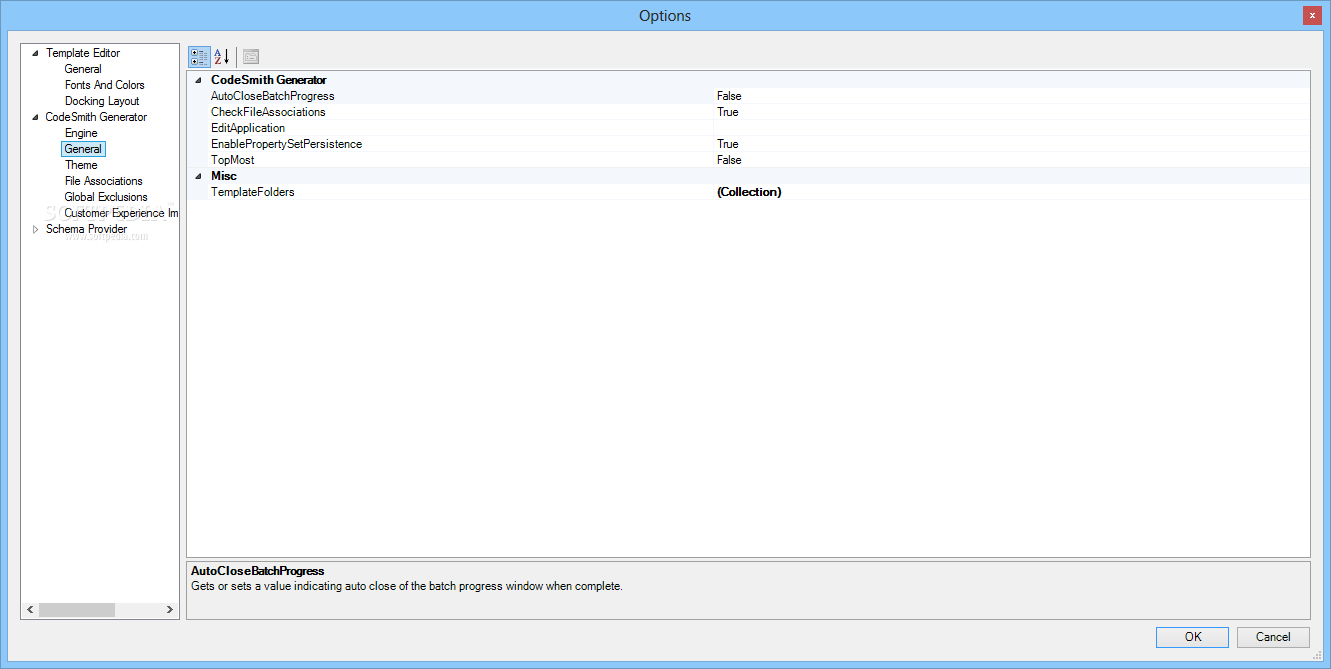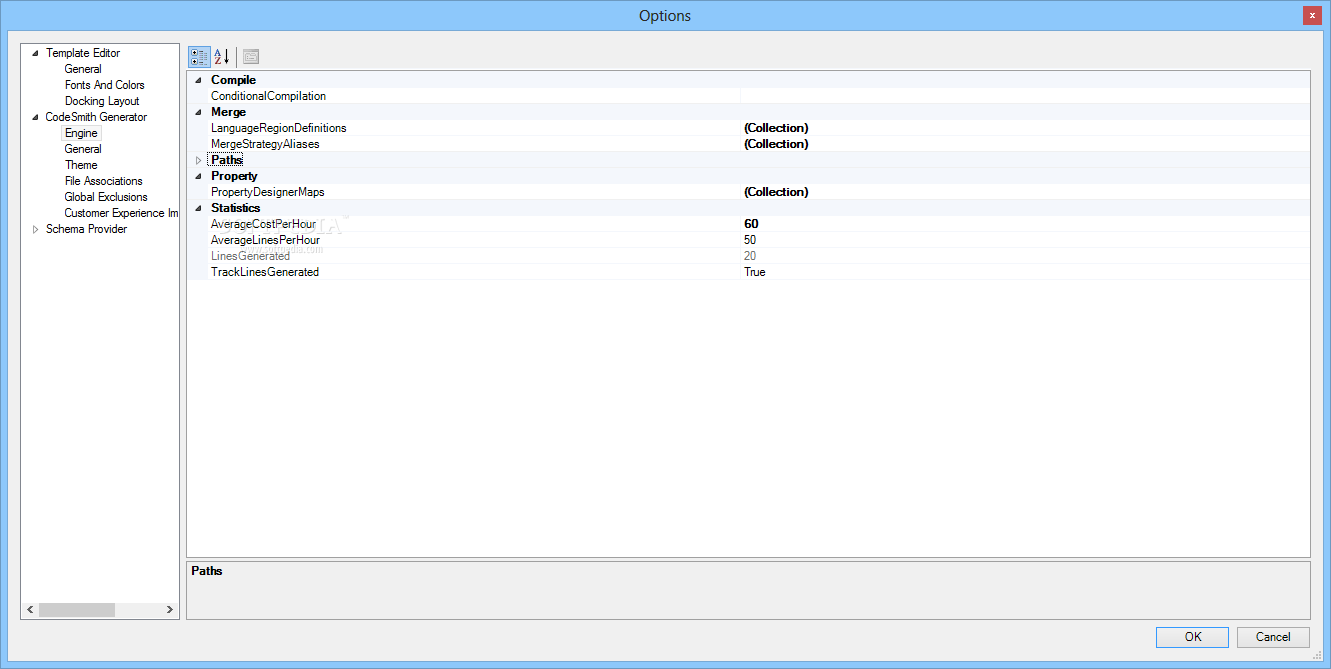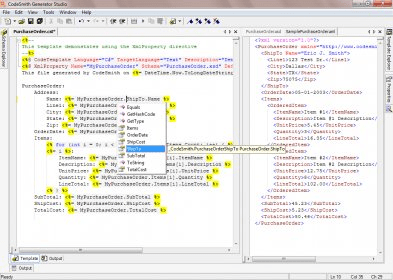
- #CODESMITH GENERATOR 6.5 SERIAL UPDATE#
- #CODESMITH GENERATOR 6.5 SERIAL FULL#
- #CODESMITH GENERATOR 6.5 SERIAL CODE#
- #CODESMITH GENERATOR 6.5 SERIAL TRIAL#
- #CODESMITH GENERATOR 6.5 SERIAL FREE#
Public long CreateFooThing( int batchID, long accountID, string checkNumber, decimal amount, string currenc圜ode,ĭateTime issuedDate, DateTime someDate, string reason, string payee)
#CODESMITH GENERATOR 6.5 SERIAL CODE#
So what does the generated stored procedure wrapper code look like? Here’s a sample for a read-single-record sproc: Awareness of DbNull and CLR value type collisions. Automatic mapping of SQL OUT and INOUT params to method return types.Ħ. If the sproc takes in a smallint, you won’t get away with shoving a System.Int64 in there.ĥ. Automatic type mapping from SQL to CLR types and vice-versa. Automatic column mapping from sproc result sets to strongly typed domain objects.Ĥ. Compile-time failures when a stored procedure interface has changed and the application code hasn’t.ģ. There has since been some minor maintenance to it, but the overall time commitment has been exceedingly small. Start to finish was under three hours, and I had no CodeSmith experience before, other than poking around in the.
#CODESMITH GENERATOR 6.5 SERIAL TRIAL#
Some history: last summer I built a CodeSmith template to do the codegen, based on sample code from CodeSmith and some trial and error. The codegen implementation will work on just about any database (it is not team-specific), and if you adhere to a few basic rules with your sproc names, the generated code will be very nice. Classes with single-record and multiple-record column-to-property converters are generated for each table in the database as well. Methods are generated for every stored procedure, and multiple sproc calls can be used inside the same using block, as the SqlConnection is maintained for the undisposed life of the SomeDatabase instance.

In the above code, the FooThing and SomeDatabase types are 100% generated code. Return FooThing.CreateFromDataReader(db.ReadFooThing(fooID)) Internally, Inquirer uses the JS reactive extension to handle events and async flows.Using (SomeDatabase db = new SomeDatabase()) Ui.updateBottomBar('new bottom bar content')
#CODESMITH GENERATOR 6.5 SERIAL UPDATE#
During processing, update the bottom bar content to display a loader Ui.log.write('something just happened.') This is useful to keep a message to the bottom of the screen while outputting command outputs on the higher section.
#CODESMITH GENERATOR 6.5 SERIAL FREE#
This UI present a fixed text at the bottom of a free text zone. User Interfaces and layoutsĪlong with the prompts, Inquirer offers some basic text UI. For convenience, the error will have a isTtyError property to programmatically indicate the cause. If prompt() is invoked outside of such an environment, then prompt() will return a rejected promise with an error. Prompt() requires that it is run in an interactive environment.

The postfix property is useful if you want to provide an extension. If neither of those are present, notepad (on Windows) or vim (Linux or Mac) is used. The editor to use is determined by reading the $VISUAL or $EDITOR environment variables. Once the user exits their editor, the contents of the temporary file are read in as the result. Launches an instance of the users preferred editor on a temporary file. Inquirer will avoid asking answers already provided here. answers (object) contains values of already answered questions.questions (Array) containing Question Object (using the reactive interface, you can also pass a Rx.Observable instance).Launch the prompt interface (inquiry session)

Inquirer.prompt(questions, answers) -> promise Node packages/inquirer/examples/checkbox.js Prompt couldn't be rendered in the current environmentĬheck out the packages/inquirer/examples/ folder for code and interface examples.
#CODESMITH GENERATOR 6.5 SERIAL FULL#
If you're searching for a full blown command line program utility, then check out commander, vorpal or args. Note: Inquirer.js provides the user interface and the inquiry session flow. Inquirer.js strives to be an easily embeddable and beautiful command line interface for Node.js (and perhaps the "CLI Xanadu").

A collection of common interactive command line user interfaces.


 0 kommentar(er)
0 kommentar(er)
